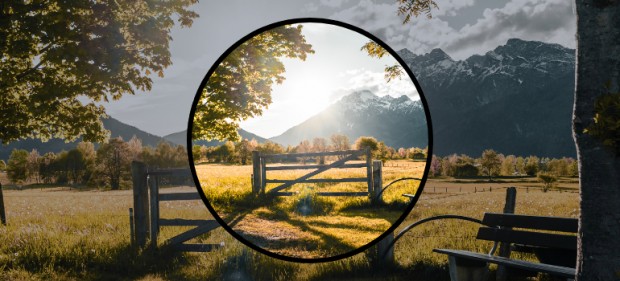Do I really need a filter?

Filters on Your Camera: What They Do?
In the world of photography, filters are often an underrated tool. However, filters can be game-changers, giving you more creative control, enhancing image quality, and protecting your camera’s lens. We’ve put together a breakdown of the different filters available to you.
What Is a Camera Filter?
A camera filter is a piece of optical glass or resin that fits onto the front of your camera lens. Filters can serve a variety of purposes, from manipulating the light entering your camera to achieve a specific effect or style to protecting your lens from dust and scratches. There are a wide variety of filters available, each designed to serve a different function, whether it’s controlling exposure, enhancing colours, or creating dramatic effects.
UV (Ultraviolet) Filters: The Lens Protector
Lets begin with the UV filter. This is primarily used for protection. It blocks ultraviolet light from entering the camera lens, which can cause hazy or blurry images, especially at higher altitudes or in areas with lots of sunlight. While modern digital sensors are less affected by UV light than traditional film, many photographers still use UV filters to protect their lens from dust, scratches, and fingerprints.
Why use a UV filter?
- Lens Protection
- Reduced Haze
Polarising Filters: Control Reflections and Enhance Colours
Polarisers are fantastic for controlling reflections and enhancing colours, especially when shooting outdoors. A Polarising filter works by reducing the glare from reflective surfaces like water or glass, making your photos clearer and more vibrant. It also deepens the blue in the sky and boosts the contrast between the sky and clouds, making landscape shots especially pop. Perfect for the unpredictable UK weather!
Why use a Polarising filter?
- Reduce Glare:
- Richer Colours
- Better Landscapes
ND (Neutral Density) Filters: Control Exposure in Bright Light
Neutral density filters are ideal for managing exposure in bright conditions. They reduce the amount of light entering the lens, allowing you to use slower shutter speeds or wider apertures without overexposing your image. This is particularly useful when shooting in bright sunlight or when you want to create specific effects, like a motion blur in a waterfall or smooth-looking water in long-exposure shots.
Why use an ND filter?
- Control Exposure
- Create Motion Effects
- Shoot at Slow Shutter Speeds
Graduated ND Filters: Balance Light in High-Contrast Scenes
Graduated ND filters are a special type of ND filter that transitions from dark to clear across the filter. These are perfect for landscape photographers who are trying to balance the exposure between a bright sky and a darker foreground. With a graduated ND filter, you can darken the sky to prevent it from becoming overexposed while keeping the foreground well-exposed.
Why use a graduated ND filter?
- Balance Exposure
- Perfect for Landscapes
- Simple and Effective
Circular vs. Linear Polarisers: The Key Difference
When it comes to Polarisers, there are two main types: circular and linear. Both reduce reflections and improve colour saturation, but the difference lies in how they interact with autofocus and metering systems. Circular Polarisers are generally preferred for digital cameras, as they allow the camera’s metering and autofocus systems to function properly. Linear Polarisers, on the other hand, are often used in older film cameras or manual cameras.
Why the difference matters?
- Circular Polarisers: Compatible with most digital cameras, they don’t interfere with autofocus or metering.
- Linear Polarisers: Used for older camera systems or in manual setups.
We all know the UK weather notoriously unpredictable. One minute, the sun is shining, and the next, you're caught in the rain. The weather can make shooting outdoors challenging, but with the right filters, you can adapt to the ever-changing conditions and still capture stunning images.
For example, when it's bright and sunny, you might want to use an ND filter to avoid overexposure, especially when you’re capturing fast-moving elements like waterfalls or streams. If a shower rolls in, a Polarising filter can help cut through the wet surfaces and give your photos more clarity, especially when shooting reflections in puddles or on wet streets.
Moreover, the lighting during can be quite dynamic on sunrises or sunsets — early mornings can have soft, diffused light, while midday brings harsh sunlight. A graduated ND filter helps balance the light between a bright sky and a darker foreground, which is especially useful when you’re photographing landscapes and nature scenes with that rapidly shifting light.
Conclusion: Filters Are More Than Just Accessories
While filters may seem like an extra investment, they provide a range of benefits that can significantly improve the quality of your photos. From enhancing colours to controlling exposure and reducing reflections, they give you more control over your images and can often achieve results that are difficult or impossible to replicate in post-production.
Whether you're dealing with bright sunlight, spring showers, or the soft light of dawn, filters allow you to adjust to these changing conditions with ease.
The key is to understand the type of filter that best suits your style and shooting conditions. Whether you're capturing a stunning landscape, shooting in bright sunlight, or experimenting with creative effects, there's a filter for almost every photographic need.
If you haven’t already, consider adding a filter or two to your camera gear. It may be the next step in taking your photography to the next level.
Search all our filters here.
-
Posted by Emma Davies
4th April 2025












